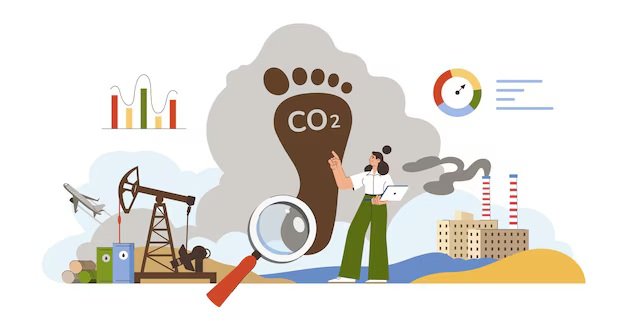Yamuna River Pollution: Causes, Effects, and Sustainable Solutions for the Future
The Yamuna River, affectionately known as the sister of the Ganges in Hindu mythology, has been a cradle of civilisation and a spiritual sanctuary for countless generations. Originating from the pristine Yamunotri glacier in the Himalayas, it meanders over 1,376 kilometres, nourishing fertile plains and sustaining the cultural heartbeat of northern India before merging with the Ganges at Prayagraj.
However, this sacred river is now grappling with severe pollution challenges. In Delhi alone, approximately 238 million gallons of untreated sewage are discharged into the Yamuna each day, contributing significantly to the river’s overall pollution in the region. This has led to alarming levels of contaminants, including faecal coliform counts reaching 7.9 million MPN/100 ml, vastly exceeding the safe limit of 500 MPN/100 ml.
We will look into the root causes of the Yamuna’s decline and explore sustainable revival strategies through real-world insights and evidence-based solutions. By understanding the challenges and embracing collaborative efforts, there is hope to restore the Yamuna to its former glory.

In This Article
- Understanding the Pollution in the Yamuna
- Cultural Reverence vs. Ecological Reality
- Attempts at Revival – What Has Worked (and What Hasn’t)
- Real-World Research and Technological Solutions
- Grassroots and Community Movements
- A Roadmap to Sustainable Revival
- Conclusion:
Understanding the Pollution in the Yamuna
Sources of Pollution
- Domestic Sewage: According to a study published in Applied Water Science, a staggering 80% of the Yamuna’s pollution comes from untreated domestic sewage. In Delhi alone, approximately 3,300 million litres of sewage are generated daily, with only about 2,000 million litres treated, leaving 1,300 million litres to flow untreated into the river. This sewage contains harmful chemicals and phosphates, leading to toxic foam formation on the river’s surface.
- Industrial Effluents: Industries along the Yamuna discharge untreated effluents containing heavy metals and chemicals directly into the river. These pollutants not only degrade water quality but also pose serious health risks to communities relying on the river for daily needs.
- Solid Waste Dumping: he riverbanks have become dumping grounds for plastic, religious offerings, and municipal waste. In March 2025, Delhi’s Irrigation and Flood Control Minister, Parvesh Verma, reported that 1,300 tonnes of garbage were removed from the Yamuna in a 10-day cleanup drive. This initiative underscores the severity of solid waste pollution in the river.
- Agricultural Runoff: In upstream regions, the excessive use of fertilisers and pesticides leads to agricultural runoff entering the Yamuna. This runoff causes eutrophication—a process where water bodies become overly enriched with nutrients, leading to excessive algae growth and oxygen depletion. Such conditions are detrimental to aquatic life and overall river health.
Delhi: The Epicentre of Pollution
Though the Yamuna flows for over 1,300 kilometres, the 22-kilometre stretch through Delhi contributes to nearly 80% of its total pollution. This section has become a ‘dead zone,’ with dissolved oxygen levels plummeting, making it incapable of supporting aquatic life. Ammonia levels have been alarmingly high, reaching up to 6.5 mg/l, far exceeding the safe limit of 0.5 mg/l.
Cultural Reverence vs. Ecological Reality
The Yamuna River holds a sacred place in the hearts of millions, revered as a goddess in Hinduism. During festivals like Chhath Puja and Kartik Purnima, countless devotees gather along its banks to offer prayers and immerse idols, symbolising spiritual devotion. However, these rituals, while deeply rooted in tradition, contribute significantly to the river’s pollution.
The immersion of idols made from non-biodegradable materials like plaster of Paris, adorned with synthetic paints containing heavy metals, introduces harmful substances into the water. Post-immersion studies have shown alarming increases in pollutants: chromium levels spiked 11 times above safe limits, iron by 71 times, and lead doubled, severely degrading water quality and threatening aquatic life.
Despite the river’s deep spiritual significance, there is a well-documented disconnect between reverence and responsibility. As noted in The Sociological Review (2022), while the Yamuna is revered as sacred in Hinduism, urban residents—especially the middle and upper classes—often experience the river only from a distance, such as from bridges. This detachment contributes to a lack of public accountability for the river’s worsening condition. Similarly, studies published in Water emphasise that although the Yamuna holds immense religious and cultural value, this reverence rarely translates into concrete environmental action, highlighting a critical gap in civic engagement.
Attempts at Revival – What Has Worked (and What Hasn’t)
Yamuna Action Plan (YAP)
Back in 1993, the Yamuna Action Plan (YAP) was launched with high hopes and Japanese funding. It aimed to clean up the Yamuna River, especially in Delhi, by building sewage treatment plants (STPs), laying new pipelines, and raising public awareness. Over the years, more than ₹1,500 crore was spent, but the river’s condition has barely improved.
One major issue was that many STPs were built but not properly maintained. A 2025 report highlighted that Delhi has one of the highest sewage treatment capacities in India, yet the Yamuna remains heavily polluted because these plants often don’t work as intended. Additionally, poor coordination among different government agencies led to overlapping efforts and inefficiencies.
Public involvement was also lacking. While there were some awareness campaigns, they didn’t lead to significant changes in behaviour. The river continued to suffer from untreated sewage and industrial waste.
Sabarmati Riverfront: A Model for Success
In contrast, the Sabarmati River in Ahmedabad tells a different story. Once facing similar pollution issues, a comprehensive project transformed it into a clean and vibrant riverfront. This success was due to strong political commitment, active community participation, and transparent monitoring.
The project didn’t just focus on cleaning the river. It also included building parks, walkways, and recreational areas, making the riverfront a place people wanted to visit and care for. This holistic approach ensured that the river stayed clean and became a valuable part of the city.
Lessons for the Yamuna: The experience with the Sabarmati River shows that cleaning a river isn’t just about building infrastructure. It requires a combination of political will, community engagement, and transparent operations. For the Yamuna, adopting a similar multi-faceted approach could lead to meaningful improvements.
Real-World Research and Technological Solutions
Bioremediation and Phytoremediation
Innovative, nature-based solutions like bioremediation and phytoremediation offer promising avenues for restoration. Aquatic plants such as water hyacinth (Eichhornia crassipes) and vetiver grass (Chrysopogon zizanioides) have demonstrated remarkable abilities to absorb heavy metals and organic pollutants from contaminated waters. These plants act as natural filters, drawing toxins into their roots and tissues, effectively cleansing the water. Recent studies have also highlighted water hyacinth’s capacity to adsorb microplastics, adding another layer to its remediation potential.
Embracing Constructed Wetlands
Traditional sewage treatment plants (STPs) are essential but often insufficient alone. Professor Rakesh Jain from IIT Delhi emphasises the need for decentralised, low-cost constructed wetlands. These engineered ecosystems mimic natural wetlands, using plants and soil to treat wastewater near its source. By integrating such systems, communities can reduce the burden on centralised infrastructure and promote sustainable water management practices.
Traditional sewage treatment plants (STPs) are essential but often insufficient alone. Decentralised, low-cost constructed wetlands—like those in Asola Bhatti Sanctuary (Delhi), East Kolkata Wetlands, and Chennai—mimic natural ecosystems, using plants and soil to treat wastewater near its source. These systems ease pressure on centralised infrastructure and support sustainable water management.
Smart Monitoring: The Role of IoT
Technological advancements are playing a crucial role in monitoring and managing river pollution. The Delhi Jal Board (DJB) has initiated real-time monitoring of major drains entering the Yamuna, deploying IoT-based sensors to track parameters like pH, biochemical oxygen demand (BOD), and coliform bacteria levels. This data-driven approach enables timely interventions and informed decision-making. Complementing this, the Delhi Pollution Control Committee (DPCC) is developing software to facilitate large-scale real-time testing of water samples, enhancing the city’s capacity to respond to pollution incidents effectively.
Grassroots and Community Movements
Yamuna Jiye Abhiyan: A Citizen-Led Crusade
In 2007, former Indian Forest Service officer Manoj Misra founded Yamuna Jiye Abhiyan (YJA), a civil society initiative aimed at reviving the Yamuna River. Misra’s approach combined ecological restoration with legal activism. He challenged unauthorised constructions on the river’s floodplains and organised public hearings to raise awareness. His efforts led to significant legal victories and inspired many to join the cause.
Clean Yamuna Drives: Community Action in Delhi
In Delhi, volunteers, including school children and NGOs, have been organising regular clean-up drives along the Yamuna’s banks. Areas like Kalindi Kunj and ITO have seen groups collecting waste and educating locals about the importance of keeping the river clean. These grassroots efforts have not only removed significant amounts of waste but have also fostered a sense of community responsibility.
Farmer-Led Initiatives in Haryana
Upstream in Haryana, farmers are adopting organic farming practices to reduce agricultural runoff into the Yamuna. The state government has launched initiatives to promote organic farming, including financial incentives and training programs. These efforts aim to decrease the use of chemical fertilisers and pesticides, which are major contributors to river pollution.
A Roadmap to Sustainable Revival
Integrated River Basin Management (IRBM)
The Yamuna flows through multiple states, each with its own policies and priorities. Integrated River Basin Management (IRBM) treats the entire river system—including its tributaries and catchment areas—as a single ecological unit. This approach necessitates collaboration among states, centralised data collection, and transparent governance. The Upper Yamuna River Board, established under a 1994 agreement, exemplifies such coordination by regulating water sharing and monitoring conservation efforts among basin states.
Public-Private Partnerships (PPPs)
Involving the private sector in waste management, infrastructure maintenance, and technological innovation can provide both funding and efficiency. For instance, the National Mission for Clean Ganga (NMCG) has implemented projects under the Hybrid Annuity Model, encouraging private investment in sewage treatment infrastructure.
Education and Curriculum Reform
Instilling environmental consciousness from a young age is crucial. Integrating river conservation topics into school curricula can foster early awareness. Programs like the National Green Corps, which operates eco-clubs in over 1,20,000 schools, engage students in activities like biodiversity conservation and waste management, cultivating a generation that values and protects natural resources.
Legal Enforcement
Despite existing regulations, enforcement remains a challenge. Establishing an autonomous Yamuna River Management Authority with legal authority can ensure stricter compliance. Such a body would oversee pollution control measures, coordinate among states, and hold violators accountable, thereby strengthening the legal framework protecting the river.
Conclusion:
The Yamuna’s crisis is not just an environmental issue—it is a mirror reflecting our societal priorities and systemic inertia. But hope is not lost. From grassroots activists to pioneering scientists, from courtrooms to classrooms, there is a growing collective will to revive the river.
Actionable Steps for Individuals
- Actionable Steps for Individuals
- Responsible Rituals: Use designated collection bins for offerings during religious ceremonies to prevent direct pollution.
- Support Sustainable Farming: Choose organic produce to reduce chemical runoff into the river.
- Participate in Cleanups: Join or support local river cleanup initiatives to contribute to the river’s restoration.
- Eco-friendly Choices: Opt for biodegradable and non-toxic household products to minimise water pollution.
- Spread Awareness: Educate others about the river’s condition and advocate for stronger environmental policies.
As the ancient saying goes, “The river is life.” And so, reviving the Yamuna is not just about restoring water—it’s about healing a civilisation.







